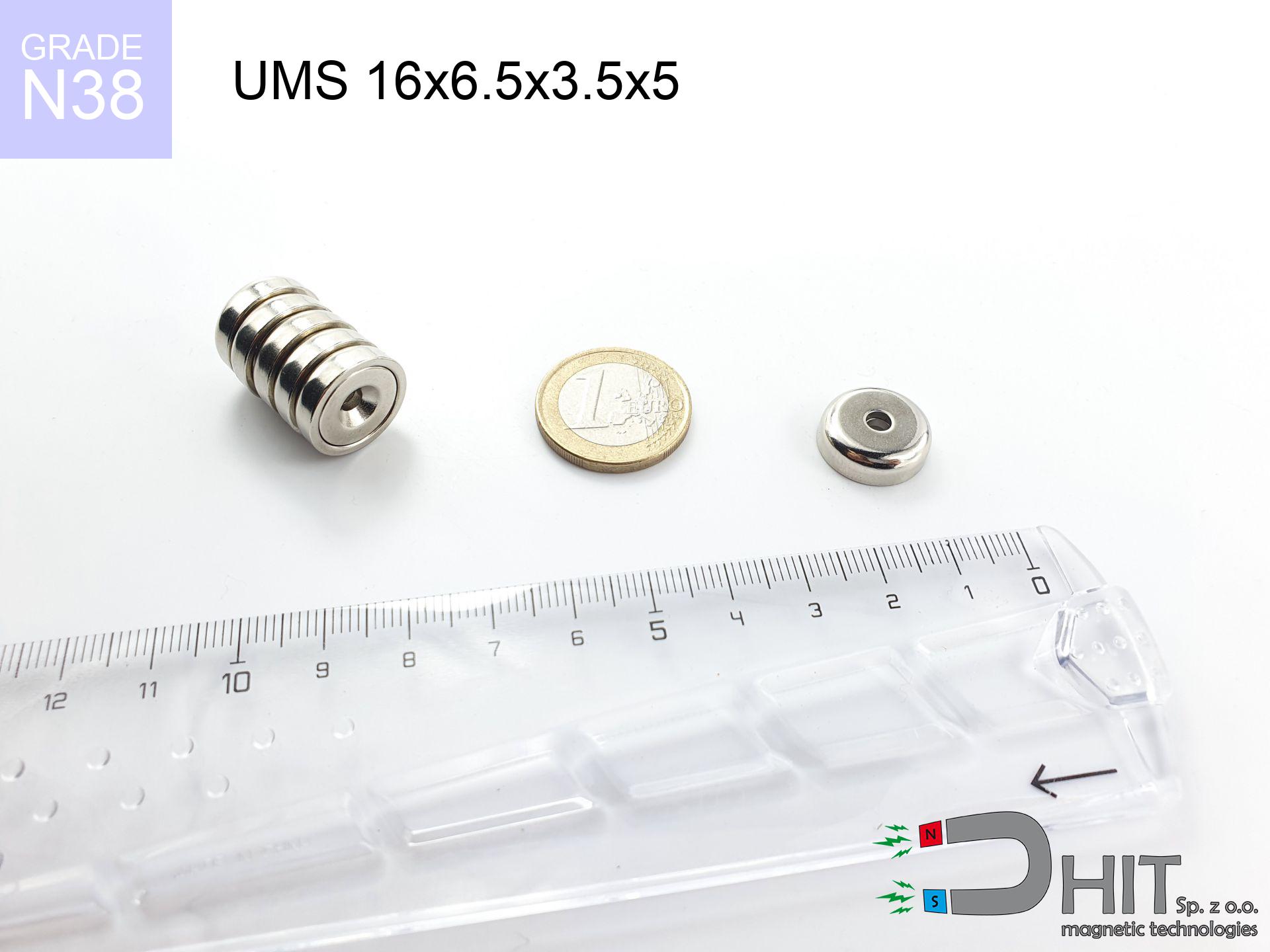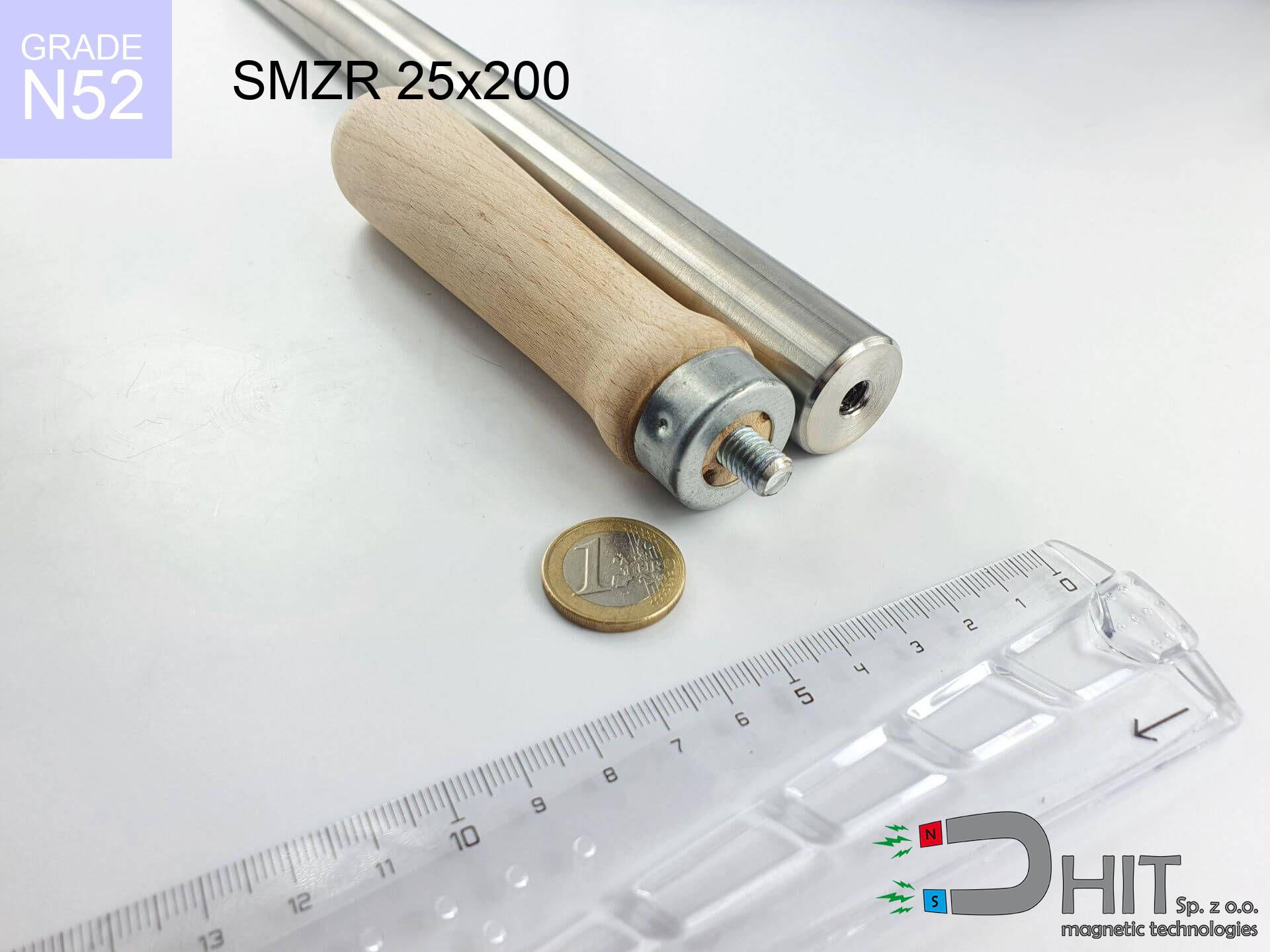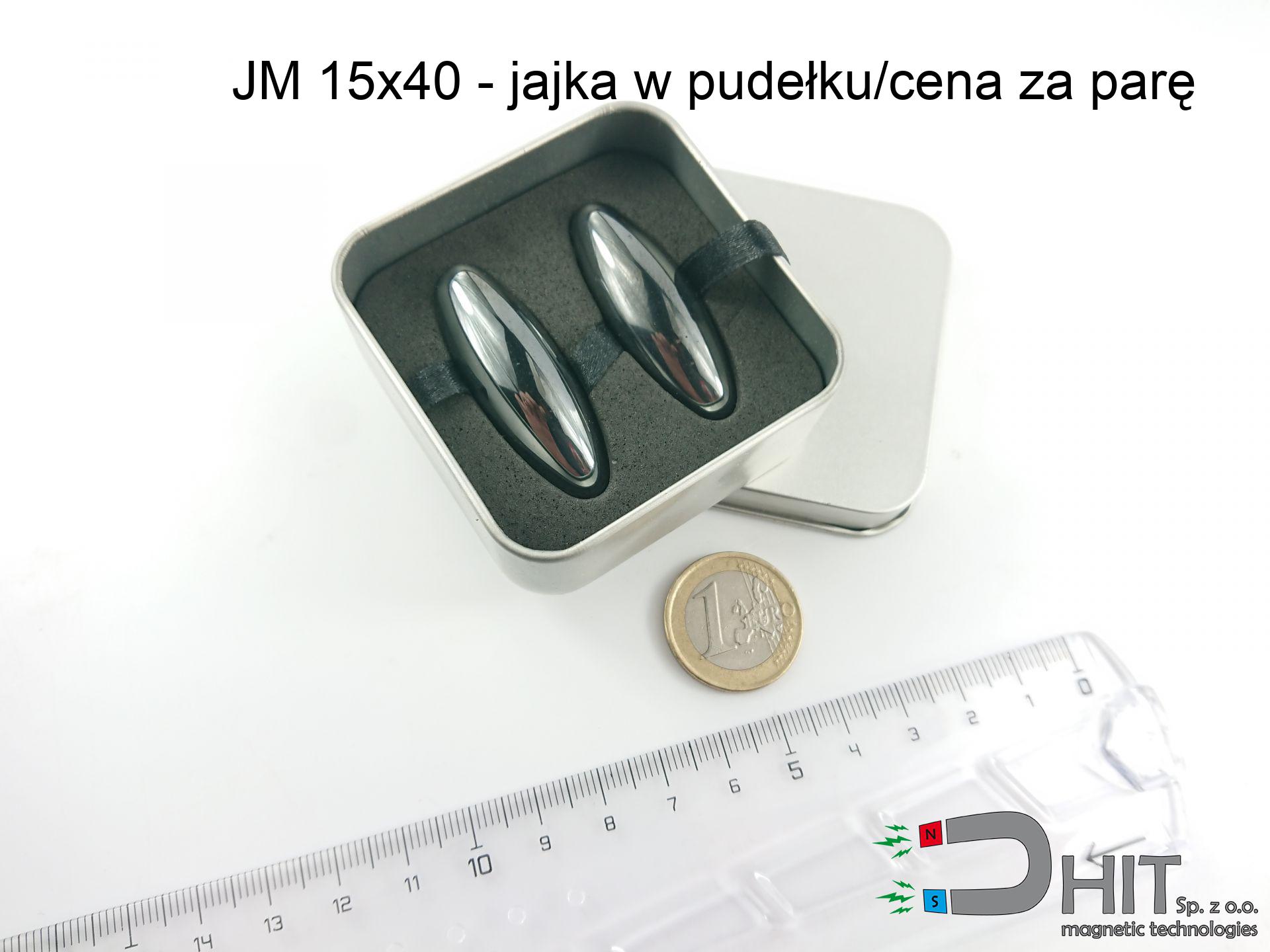UMS 16x6.5x3.5x5 / N38
conical magnetic holder
catalog number 220326
GTIN: 5906301814160
diameter Ø
16
mm [±0,1 mm]
cone dimension Ø
6.5x3.5
mm [±0,1 mm]
height
5
mm [±0,1 mm]
magnetizing direction
↑ axial
capacity ~
5.00 kg / 49.03 N
max. temperature
≤ 80
°C
catalog number 220326
GTIN: 5906301814160
diameter Ø
16 mm [±0,1 mm]
cone dimension Ø
6.5x3.5 mm [±0,1 mm]
height
5 mm [±0,1 mm]
magnetizing direction
↑ axial
capacity ~
5.00 kg / 49.03 N
max. temperature
≤ 80 °C
3.25 ZŁ gross price (including VAT) / pcs +
2.64 ZŁ net price + 23% VAT / pcs
bulk discounts:
need more quantity?Want to talk about magnets?
Give us a call tel: +48 22 499 98 98 or get in touch through contact form on our website. You can check the power and the shape of neodymium magnet in our force calculator force calculator
Orders placed by 2:00 PM will be shipped on the same business day.
Specification: conical magnetic holder 16x6.5x3.5x5 / N38 ↑ axial
Magnetic properties of the material N38
Physical properties of sintered neodymium magnets Nd2Fe14B
Shopping tips
Advantages and disadvantages of neodymium magnets NdFeB.
Apart from immense power, neodymium magnets have the following advantages:
- They do not lose strength over time - after about 10 years, their strength decreases by only ~1% (theoretically),
- They are highly resistant to demagnetization by external magnetic field,
- Thanks to the shiny finish and nickel, gold, or silver coating, they have an aesthetic appearance,
- They exhibit very high magnetic induction on the surface of the magnet,
- Thanks to their high temperature resistance, they can operate (depending on the form) even at temperatures up to 230°C and above...
- Due to the option of accurate forming and adaptation to individual needs – neodymium magnets can be produced in various forms and dimensions, which amplifies their universality in usage.
- Significant importance in the industry of new technologies – are used in hard drives, electric motors, medical equipment or very modern machines.
Disadvantages of neodymium magnets:
- They are prone to breaking as they are extremely fragile when subjected to a strong impact. If the magnets are exposed to impacts, it is suggested using magnets in a metal holder. The steel housing in the form of a holder protects the magnet from impacts and simultaneously increases its overall strength,
- They lose power at high temperatures. Most neodymium magnets experience permanent loss of strength when heated above 80°C (depending on the shape and height). However, we also offer special magnets with high temperature resistance, up to 230°C,
- Due to their susceptibility to corrosion in a humid environment, we recommend using waterproof magnets made of rubber, plastic, or other moisture-resistant materials when using them outdoors,
- The use of a cover - a magnetic holder is recommended due to the limited production capabilities of creating threads or complex shapes in the magnet
- Possible danger associated with microscopic parts of magnets are risky, if swallowed, which is particularly important in the aspect of protecting young children. Furthermore, miniscule components of these products have the potential to complicate diagnosis after entering the body.
Handle Neodymium Magnets Carefully
The magnet coating contains nickel, so be cautious if you have a nickel allergy.
Studies show a small percentage of people have allergies to certain metals, including nickel. An allergic reaction often manifests as skin redness and rash. If you have a nickel allergy, you can try wearing gloves or simply avoid direct contact with nickel-plated neodymium magnets.
Neodymium magnetic are extremely delicate, they easily crack and can become damaged.
In the event of a collision between two neodymium magnets, it can result in them getting chipped. Despite being made of metal as well as coated with a shiny nickel plating, they are not as hard as steel. At the moment of connection between the magnets, tiny sharp metal fragments can be propelled in various directions at high speed. Eye protection is recommended.
Dust and powder from neodymium magnets are highly flammable.
Do not attempt to drill into neodymium magnets. Mechanical processing is also not recommended. Once crushed into fine powder or dust, this material becomes highly flammable.
Neodymium magnets can demagnetize at high temperatures.
Although magnets have shown to retain their effectiveness up to 80°C or 175°F, this temperature may vary depending on the type of material, shape, and intended use of the magnet.
Magnets should not be treated as toys. Therefore, it is not recommended for youngest children to have access to them.
Not all neodymium magnets are toys, so do not let children play with them. Small magnets pose a serious choking hazard or can attract to each other in the intestines. In such cases, the only solution is to undergo surgery to remove the magnets, and otherwise, it can even lead to death.
Neodymium magnets are the most powerful magnets ever invented. Their power can shock you.
Make sure to review all the information we have provided. This will help you avoid harm to your body and damage to the magnets.
Do not place neodymium magnets near a computer HDD, TV, and wallet.
Magnetic fields generated by neodymium magnets can damage magnetic storage media such as floppy disks, credit cards, magnetic ID cards, cassette tapes, video tapes, or other similar devices. In addition, they can damage televisions, VCRs, computer monitors, and CRT displays. You should especially avoid placing neodymium magnets near electronic devices.
Neodymium magnets are not recommended for people with pacemakers.
In the case of neodymium magnets, there is a strong magnetic field. As a result, it interferes with the operation of a heart pacemaker. However, if the magnetic field does not affect the device, it can damage its components or deactivate the device when it is in a magnetic field.
Keep neodymium magnets as far away as possible from GPS and smartphones.
Intense magnetic fields generated by neodymium magnets interfere with compasses and magnetometers used in navigation, as well as internal compasses of smartphones and GPS devices.
Neodymium magnets can attract to each other, pinch the skin, and cause significant injuries.
If have a finger between or on the path of attracting magnets, there may be a serious cut or a fracture.
Please read the article - What danger lies in neodymium magnets? You will learn how to handle them properly.



![magnetic separator 25x250 [2xM8] / N42 magnetic separator 25x250 [2xM8] / N42](https://cdn3.dhit.pl/graphics/products/sm-25x250-2xm8-ker.jpg)




